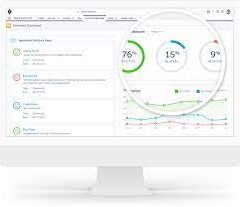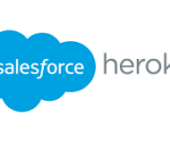Einstein Vision: Enhancing Document Personalization with AI
Introduction to Einstein Vision
Harness the power of artificial intelligence (AI) to personalize documents with Salesforce Einstein Vision. The latest updates allow you to extract structured data from custom forms and invoices using Einstein OCR (beta), revolutionizing how you handle and process documents.
Extract Data from Custom Forms with Einstein OCR (Beta)
Einstein OCR (Optical Character Recognition) now enables rapid data extraction from custom forms such as insurance, mortgage, and healthcare documents into Salesforce records. The OCR model analyzes the layout and content of your custom forms, extracting values based on user-defined fields.
Extract Data from Invoices with Einstein OCR (Beta)
Similarly, Einstein OCR can quickly extract structured data from invoices, converting it into Salesforce records. The OCR model identifies and extracts values from predefined fields such as invoice number, date, due date, purchase order, total amount, total tax amount, and amount due.
New Capabilities in Einstein OCR
- Support for PDF Documents: Einstein OCR now handles documents in PDF format (beta), in addition to graphic image formats. The maximum file size for images or PDFs has increased from 5 MB to 10 MB.
- Detection of Common Forms: Einstein OCR can now extract text from standard forms like driver’s licenses, Form W-2, and Form 1040. It infers document layouts and relationships to extract relevant fields accurately.
What is Einstein Vision?
Einstein Vision, part of the Einstein Platform, is more than just a tool for recognizing images. It combines ease of use with powerful technology to enable innovative use cases in various Salesforce Clouds. Einstein Vision includes functionalities like Image Classification, Object Detection, and OCR, each with distinct capabilities.
- Image Classification: Categorizes images into defined categories (e.g., ‘dogs’ or ‘muffins’) or multiple categories (e.g., ‘dogs’ and ‘muffins’).
- Object Detection: Identifies and locates objects within images, providing coordinates for each detected item.
- OCR (Optical Character Recognition): Converts characters in images to text, useful for processing labels, business cards, and tabular data.
Setting Up Einstein Vision
- Preparation: Define your focus and gather training data. For instance, to distinguish damaged doors from new ones, create labeled folders with images of each type.
- Training: Connect to the Vision platform, upload your training data, and start model training. This involves obtaining your Einstein Vision key, uploading it, and using tools like cURL for efficiency.
- Evaluation: Assess the model’s performance by testing predictions and refining based on results. Iteration is key to improving data quality and model accuracy.
- Activation: Once satisfied with the model, connect it to Salesforce using API integrations to leverage insights within your Salesforce environment.
Applications of Einstein Vision
Einstein Vision is applicable across various Salesforce Clouds:
- Sales and Service Cloud: Use for in-field audits, part identification, and customer-submitted image analysis.
- Marketing Cloud: Leverage features for brand recognition and social media monitoring, integrating with tools like Social Studio.
Conclusion
Einstein Vision simplifies and enhances document processing and image analysis. By focusing on defining clear use cases and maintaining high data quality, you can unlock the full potential of Einstein Vision. Embrace AI to streamline your workflows and drive creative solutions in your Salesforce environment.
🔔🔔 Follow us on LinkedIn 🔔🔔
Content updated February 2024.









